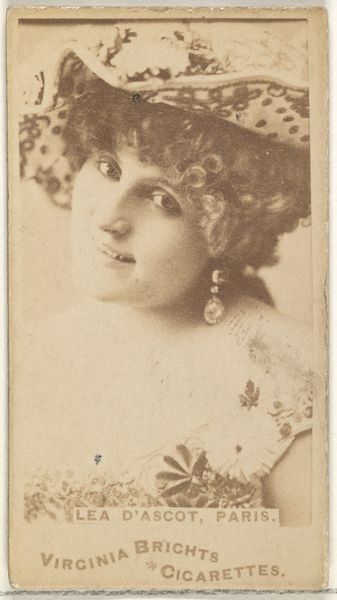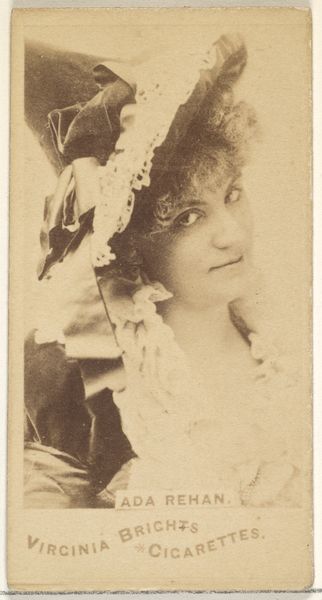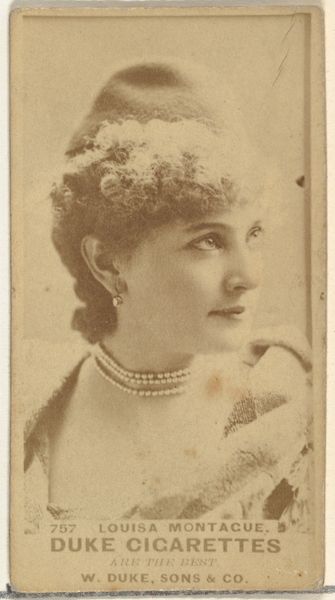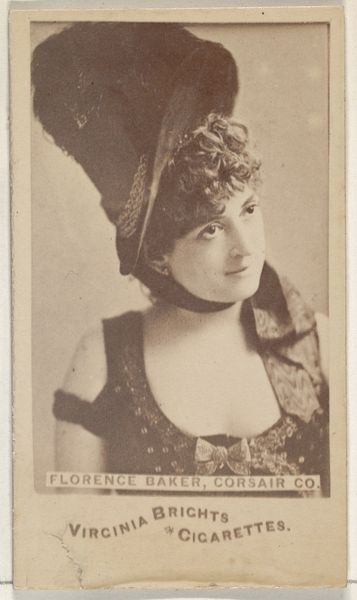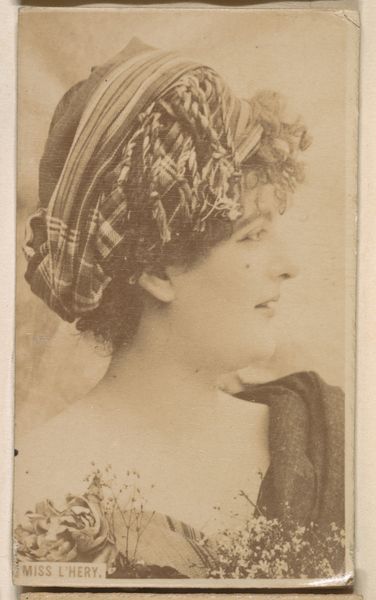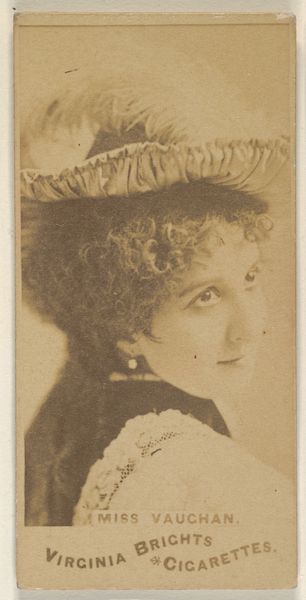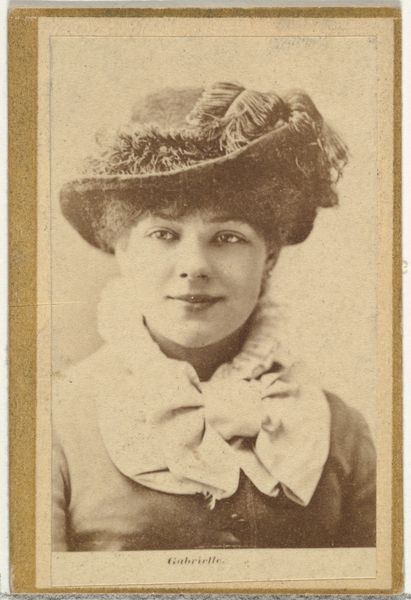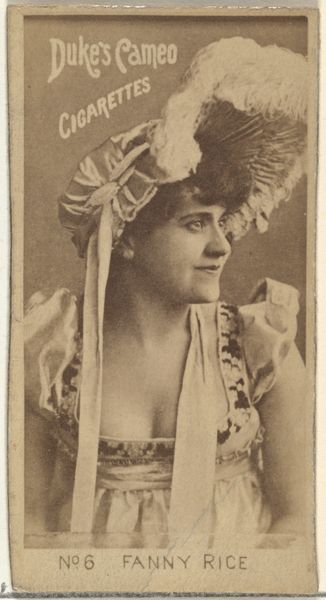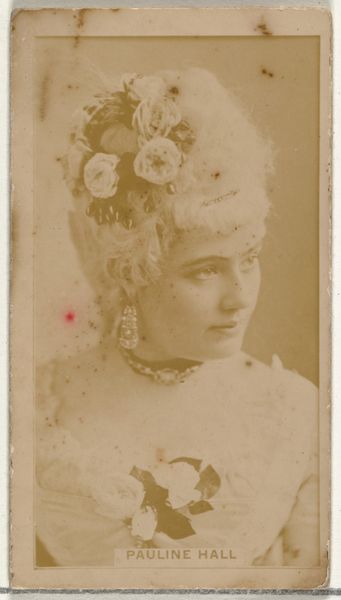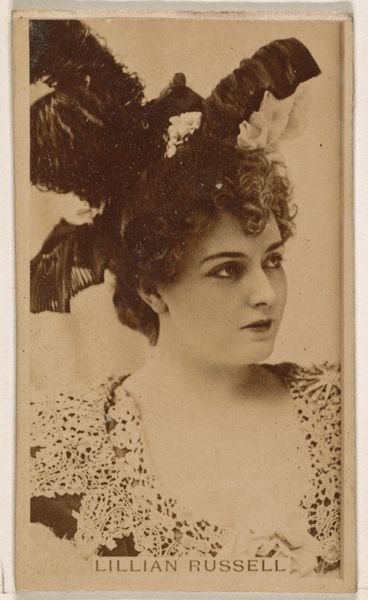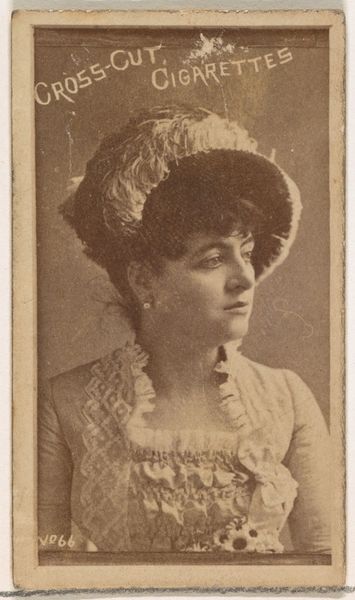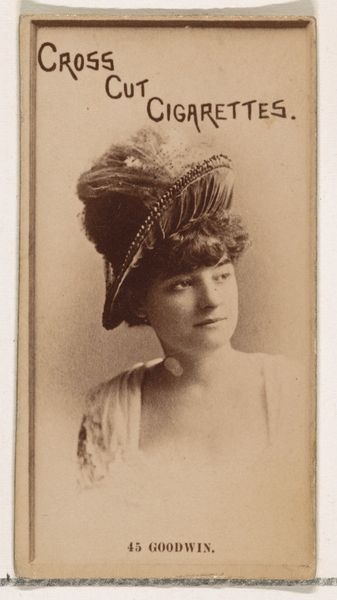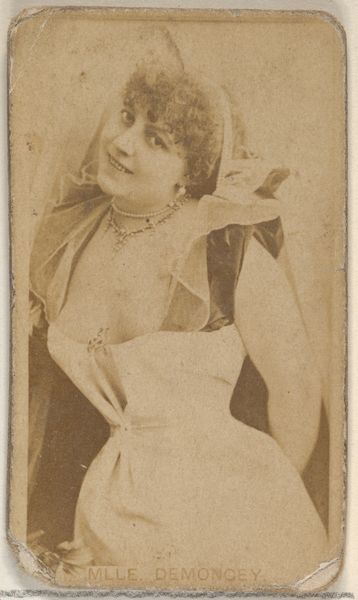
Card 930, Fay Templeton, from the Actors and Actresses series (N45, Type 2) for Virginia Brights Cigarettes 1885 - 1891
0:00
0:00
drawing, print, photography
#
portrait
#
drawing
#
pictorialism
# print
#
photography
Dimensions: Sheet: 2 3/4 x 1 3/8 in. (7 x 3.5 cm)
Copyright: Public Domain
Curator: Here we have "Card 930, Fay Templeton, from the Actors and Actresses series (N45, Type 2) for Virginia Brights Cigarettes." It was created by Allen & Ginter between 1885 and 1891. Editor: What immediately strikes me is how much this portrait, seemingly intended for mass consumption, evokes a very particular Gilded Age feminine ideal. There's a vulnerability in her gaze mixed with the overt display of wealth, and all situated in a very accessible format, of course. Curator: Right, the format is key. These cards, mass-produced through photography and printmaking, weren’t just about the image itself. Think about where they were found: in cigarette packs. A small luxury item packaged with another luxury item and circulated widely. It merges commerce and the burgeoning celebrity culture. Editor: Precisely. The construction of celebrity is tied to consumerism. Templeton, an actress, becomes a commodity, and smoking is subtly linked to sophistication and access to glamour. Consider who had the means to consume these goods. Who had the social power? How did gender and class intersect here? Curator: It also challenges the accepted artistic hierarchy. While traditional painted portraits were reserved for the elite, these cards offered a more democratic form of portraiture, albeit tied to consumerism. The materiality is simple, paper and ink, mass-produced—but the impact on disseminating images and creating aspirational figures was significant. Editor: The composition also warrants attention. Her soft focus—is this intentional to signal refinement or perhaps reinforce an image of women as demure and non-threatening? What visual codes does it borrow from other, more established, portrait traditions? This also brings questions around how power and femininity get materialized, captured, consumed. Curator: Absolutely. Looking closely, the printing techniques themselves contribute. The slightly desaturated tones, the subtle variations in ink density from one card to the next – all results of industrial printing processes from the late 19th century. And these minute details affect how we perceive the subject today, don't they? It offers that distance. Editor: They remind us, undeniably, that the subject—and her carefully crafted image—has long outlived her time and now exists entirely as a consumer product in our minds, layered by countless associations, even in this museum setting. It is worth interrogating this portrait and the context in which this was constructed. Curator: So true. The artwork gives clues as to the context it was extracted from; a strange artifact, still with potency for debate, as our conversation here has testified to. Editor: Indeed, this little card manages to unlock so many layers of historical and social complexities.
Comments
No comments
Be the first to comment and join the conversation on the ultimate creative platform.

